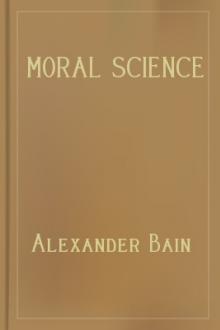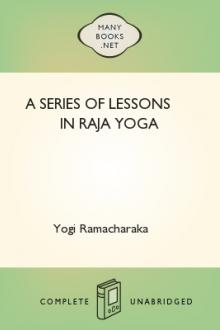Man's Fate and God's Choice by Bhimeswara Challa (feel good fiction books .txt) 📕

Read free book «Man's Fate and God's Choice by Bhimeswara Challa (feel good fiction books .txt) 📕» - read online or download for free at americanlibrarybooks.com
- Author: Bhimeswara Challa
Read book online «Man's Fate and God's Choice by Bhimeswara Challa (feel good fiction books .txt) 📕». Author - Bhimeswara Challa
the tremendous progress made by medicine to combat these foes, disease always seems to stay a step ahead. Of all the things that cause us pain and suffering, sometimes excruciating and unendurable, disease and disability are the foremost. They can rob a man of his dignity and desire for life, underscore both the power and the fragility of the human condition. Even saints were not immune to disease and death as was the case with Therese of Lisieux and Bernadette Soubirous, who suffered serious illnesses in their short lives. The Indian rishis, Ramana Maharshi and Ramakrishna Paramahamsa agonizingly suffered due to cancer and succumbed to it. It is this very human body that finally falters and fails and many great lives came to an abrupt end, not for want of will, but because of the inability of the body to endure. The history of humanity would have been different had such people’s bodies kept pace with their will. The length of life itself is measured by the durability of the body. What is the role and purpose of the body in its present journey on earth and in our spiritual quest to the final destination? We get mixed or conflicting messages from the scriptures. On the one hand, the human body is extolled as the very abode of God and as the vehicle for God-realization and, on the other hand, the illusion of body-identification is the root of all evil and the main obstacle to spiritual progress, the ‘limiting adjunct to the Atman’. In one ancient Hindu text, the Uttara Gita, which is a part of Brahmanda Purana, it is written that the body is extremely impure and cannot be purified, while the Self (Atman) is ever pure and does not need purification.60 And again, on the one hand, we are asked not to run away from our worldly responsibilities and are told that renunciation is not abdication and, on the other hand, we read in the Upanishads that ‘unless a man feels disgusted with the worlds to which his actions may bring him, and unless he believes firmly that the world beyond the reach of his actions can never be obtained by any actions however good, man cannot obtain moksha or mortal liberation.’61 The Kathopanishad says “The human body is the only chance where a person could receive liberation from the eternal bondage and the inflictions of maya. If you do not realize God before death overtakes you, it would be the greatest desire of your life and you will be suffering for uncountable lifetimes by taking birth in various species.”62 A Hindu scripture says ‘manav shareer ko tarsey dev’; meaning that gods (angelic beings) yearn for the human body. The Sikh scripture Gurbani, strikes the same note and says that human birth is a precious jewel and even the demi-gods long for this human body; among all the living species, only human beings are the most fit to be instructed about the nature of truth or the essence of divinity. It is because, while the gods may enjoy many enviable attributes, they cannot, as only humans can, make the final leap to God. It is an article of sublime faith in Hinduism that the real and sole purpose of human life is the realization of the Self or God and that the way to this realization is the only true religion. But as ages passed, this insight got superseded or superimposed by worldly desires. The Self, the self, and the senses all got mixed up. But the sacredness of the human body was never off the radar of human thought and belief.
The Indian spiritual teacher Swami Vivekananda who shook the World Parliament of Religions (1893), in Chicago, USA, with his imposing presence and eloquent mastery of Indian philosophy, said “The moment I have realized God sitting in the temple of every
60 Swami Sivananda. Sarva Gita Sara. 1999. The Divine Life Society Publications. P.O. Shivanandanagar, Himalayas, Uttar Pradesh, India. p.155.
61 R.D. Ranade. A Constructive Survey of Upanishadic Philosophy. 1968. Bharatiya Vidya Bhavan, Chowpatty, Bombay, India. pp.241-242.
62 The Vedic Foundation. Bhartiya Scriptures. Accessed at: http://www.thevedicfoundation.org/authentic_hinduism/bhartiya_scriptures.htm
human body, the moment I stand in reverence before every human being and see God in him, that moment I am free from bondage, everything that binds vanishes, and I am free.”63 While this is the mainstream view, Ramana Maharshi says “It is not true that birth as a man is necessarily the highest, and that one must attain realization only from being a man. Even an animal can attain Self-realization.”64 All are the creations of God and while various vignettes of life have different traits, to say that one particular creature is superior and only that creature can reach God sounds illogical. But all scriptures do not share this view. The Bible says that God made all animals that walk on the earth (the sixth day), on the same day. He created man separately in His own image with the intent that man would have dominion over every other living thing on Earth (Genesis, 1:26-28). The Apostle Paul stated clearly that man is not an animal when he wrote “All flesh is not the same flesh: but there is one kind of flesh of men, another flesh of beasts, another of fishes, and another of birds” (1 Corinthians, 15:39).
Another important question that often crops up in theology is what we might call the connectivity of human destiny. Do we all inhabit separate bodies, live separately, die separately and any interfacing in between is only a social, not spiritual need? Are we responsible for our own behavior or also for that of others with whom we get connected?
Does every man pay for his own sins and reap the fruits of what he sows, or is there a collective spin-off, good and bad? In karmic terms, if karma is strictly individual, one pays or gets rewarded for one’s actions through bad or good karma, carried over from birth to birth; or, if one’s actions have any bearing on other’s lives, at the level of family, community or country, they do result in a collective spin-off. El Morya, one of the founders of theosophy and Agni Yoga, who lived in the late 1800s, wrote thus “There are many combinations of personal, family, and national karma. One may ask if it is possible that an injustice committed against one person could affect a whole country. Indeed it can, especially since many who are involved with one another reincarnate in the same country. People acknowledge that physical characteristics are transmitted through generations; it is regrettable that they are not aware that karmic traits can also be transmitted.”65 In other words, every individual deed has a species spin-off; it primarily affects that individual but also has a bearing on the lives of those around, the family, group or community, and on the whole of humanity. In varying degrees, every relationship in the world is an interplay of individual karmas; the more intimate a relationship, the more intertwined are the karmas. Personal karma, group karma and cosmic karma are combined. What the world is today, is the cumulative fallout of the collective karma of all the generations that have come and gone since the time of the first man. And more topically, every thought, word, and act of every individual is an input into the makeup of future generations. We are responsible for what we think because only at that level we exercise real choice. Reincarnation is not simply an endless succession of transmigrations from one body to another on this planet. There are also several worlds and more planes of existence than what we call life on earth. Together they constitute a complex web and constantly impact each other. Many things baffling in life such
63 Practical Vedanta. Ramakrishna - Vivekananda Center of New York, USA. Accessed at: http://www.ramakrishna.org/activities/message/weekly_message7.htm
64 Ramana Maharshi. Readings in the Theory of Karma: Evolution from Lower Forms. Accessed at: http://baharna.com/karma/1_Readings.htm
65 EI Morya On Karma and Reincarnation. El Morya from Agni Yoga Society. The Inner Life - Book 2 (1938)
– 304. Accessed at: http://www.reversespins.com/agnikarma.html
as the apparent triumph of evil and suffering of the virtuous, and questions such as why some people seem to have all the luck all the time become explainable, if not explained.
While life’s journey might take us from planet to planet and from one form to another, on this planet at least the vehicle of experience remains the body. But the body is not all, or only what we see in the mirror. According to Hindu traditional belief, the body consists of five primary elements called the mahabhutas: earth, fire, water, air, and ether. And we are not a single ‘body’ but five, called the koshas, or sheaths. The Annamaya kosha covers the gross or physical body, the Pranamaya, Manomaya and Vijnanmaya koshas cover breath, mind, and intellect respectively. The highest, Anandmaya kosha is the sheath of bliss.66 The Bible says that the body is the temple of the Holy Spirit within us, which is co-equal with God.
Then again, the scriptures somewhat downgrade the body as a vehicle prone to sin and selfishness; and we are also exhorted to shed our body-consciousness and identification. These two visions — inherent holiness and captive of sinful senses — are so conflicting that human consciousness has not found a modus operandi of reconciliation. Since the ‘holy’ way is too complex and hazy, we tend to follow the sensual path, which does not require any effort. And that is trouble. The way we should view and relate to our body, and how we should steer its evolution, is an important issue in the context of transformation. Contrary to the conventional view that the human evolution has pretty much run its course, new research and findings indicate that we are still evolving. Some 700 regions of the human genome have been reshaped by natural selection during the past 5,000 to 15,000 years.67 And this discovery has enormous implications for the future. It is important because evolution is adaption to the environment, and the future man might genetically reflect the technological and gadget-suffused environment. Our domestication of high technology including biotechnology, that some experts predict will soon happen, could get under our skin; what is external now could be integral and internal in the future. How exactly we cannot tell, but how we live now will affect not only the lives, but also the bodies of future generations. Often, our body is the only visible reality, the only tangible experience. But that body too is not constant even during one’s lifetime. In youth, it is our pride and joy, and in old age a drag, an embarrassment and even ridicule till death puts an end to its misery. The Buddhist scripture Dhammapada describes old age (jaravagga in Pali) in such terms as ‘thoroughly worn out’, ‘putrid mass breaking up’, ‘a nest of diseases, perishable’, ‘ending in death’. Every day becomes a struggle to cope with its vulnerabilities and infirmities; its weight is the measure of our worth and health; its curves and contours, the symbol of self-esteem. Our battle with the body is what preoccupies most lives; it consumes much of our thinking space and absorbs much of our ingenuity. Nothing, not even death, is more dreaded in life than old age itself, which symbolizes just waiting for death, seeing death all around, and in the meantime being subjected to debility, decay, and disease. It is all very well





Comments (0)